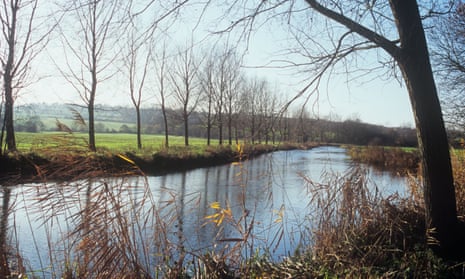The government has “no idea” how much water is being taken from rivers and groundwater, according to an Environment Agency (EA) whistleblower, as swathes of England remain in drought despite recent heavy rainfall.
The whistleblower told the Guardian that the EA’s regulation of water abstraction points for farms, small businesses and private water supplies was “absolutely pointless” because most were not metered and the monitoring that did take place was unreliable.
Abstractions were monitored on a rota system but the agency’s inspections were a “waste of time”, said the whistleblower, because, in most cases, the abstracting individual or organisation would report how much water they had removed based on what they had noted down on a particular day – and “they have to be taken at their word”.
“They’re not going to log an illegal number,” said the insider. “That’s why there’s so little enforcement on water abstraction, they’re not going to dob themselves in.”
The abstraction licensing regime dates back to the 1960s and successive governments have pledged to reform it for more than a decade.
According to the EA’s figures for 2018, the latest year for which data is available, there were 18,193 abstraction licences in force in England, when, it estimated, 10.4bn cubic metres was removed from non-tidal surface and groundwaters.
The Guardian asked the EA for the total number of abstraction points in England and the proportion that are monitored but was not given the information.
Abstractions of less than 20 cubic metres a day became exempt from licensing in 2005 under the Water Act. The move instantly deregulated 22,000 licences, most of which were for agricultural or private water supply purposes.
The EA said: “Abstraction licences have conditions attached to them to ensure the environment and the rights of other abstractors are protected. Our powers and duties enable us to regulate the use of water under existing licences and to decide whether to grant new ones. Where abstraction is damaging the environment, we also have the power to amend or revoke existing licences.”
However, under current rules, if the agency changes the conditions of a licence because the abstraction is damaging the environment, it must pay financial compensation to the abstractor. There are plans to remove this requirement, but not until 2028.
The EA said it “routinely require[s] the licence holder to keep a record of actual abstraction available for inspection at a relevant location. This is in addition to the requirement to provide the Environment Agency with formal records of actual abstraction and compliance inspections carried out by regulatory officers.”
It said it was reforming the abstraction management system to “maximise the amount of water available to abstractors whilst also protecting water ecosystems in line with legal requirements to reduce the risk of environmental deterioration” The EA is “committed to ending damaging abstraction of water from rivers and groundwater wherever it is cost effective to do so”, it added.
However, there are no plans to require abstractors to install water meters. The EA insider said that omission meant the system would remain seriously flawed. “You can change how much water a licence allows, but it’s pointless if there’s no meter to record it,” they said.
From next year, the agency plans to “start investigations to determine the changes that may be required to individual permanent abstraction licences”. Until then, it will “continue to seek voluntary changes to abstraction licences through negotiation and adopting nature based and catchment solutions, where possible”.
Feargal Sharkey, the vice-president of the charity WildFish, is not convinced, saying that “every day things appear more rotten” at the EA and that the regulator is “sacrificing the environment on the high altar of corporate greed”.
Dr Nathan Richardson, the head of policy and strategy at the NGO Waterwise, said: “The Environment Agency has highlighted that we face a shortfall of around 4bn litres of water a day if we want secure water supplies and a healthy environment.
“Given this challenge, it seems pretty fundamental that regulators know how much water is being abstracted, where and when. Without appropriate monitoring and enforcement, abstraction regulation won’t work and it is very difficult to ensure that water is being abstracted legally and used efficiently.”
An EA spokesperson said: “We are taking robust action to end environmentally damaging water abstraction – and we monitor the amount of water in our rivers and groundwater along with assessments of the impact of water abstraction in all of our catchments.
“Licence holders must monitor and record how much water they abstract and our programme of inspections ensures they comply with these strict conditions. We will not hesitate to take enforcement action in cases where conditions are not being met.”
